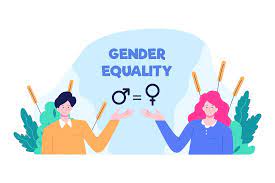Navigating Gender Disparity in Business Education

In the realm of business education, a subtle yet persistent imbalance often lurks: gender disparity. While strides have been made in recent years to promote gender equality in various fields, including business, the journey toward equilibrium remains ongoing and multifaceted.
One of the fundamental challenges in addressing gender imbalance in business education is the historical underrepresentation of women in leadership roles across industries. This lack of representation can trickle down to educational settings, where aspiring female professionals may face implicit biases or systemic barriers. Despite women making up a significant portion of business school enrollees, they are often underrepresented in leadership programs or face obstacles in accessing opportunities for advancement.
Moreover, societal norms and stereotypes can influence perceptions of gender roles within the business sphere. Traditional notions of leadership may lean toward qualities typically associated with masculinity, potentially disadvantaging women who possess different leadership styles or approaches. Overcoming these ingrained biases requires a concerted effort to foster inclusive environments within business education that celebrate diverse perspectives and leadership styles.
Addressing gender disparity in business education also involves promoting mentorship and networking opportunities tailored to the needs of aspiring female leaders. Mentorship programs can provide invaluable guidance, support, and access to professional networks that may otherwise be challenging to navigate. By fostering mentorship relationships between established female leaders and emerging talent, business schools can empower women to overcome barriers and thrive in their chosen fields.
Additionally, curriculum design plays a crucial role in promoting gender equality within business education. Integrating diverse perspectives and case studies into coursework can broaden students’ understanding of business challenges and solutions. By highlighting the achievements and contributions of women in business, educational institutions can inspire future generations of female leaders and challenge traditional narratives of success.
Furthermore, fostering a culture of inclusivity and allyship within business schools is essential for creating environments where all students feel valued and supported. Encouraging open dialogue and awareness of gender dynamics can help mitigate biases and create opportunities for constructive engagement. By actively involving male students and faculty in discussions about gender equality, business schools can cultivate allies who champion diversity and inclusion in their future careers.
In conclusion, navigating gender disparity in business education requires a multifaceted approach that addresses systemic barriers, societal norms, and educational practices. By promoting inclusive environments, mentorship opportunities, diverse curriculum design, and allyship, business schools can empower aspiring female leaders to overcome obstacles and achieve their full potential. As we continue to strive for gender equality in all sectors, fostering diversity and inclusion in business education remains paramount for shaping a more equitable and prosperous future.
Repurposed article originally published in the Forbes









